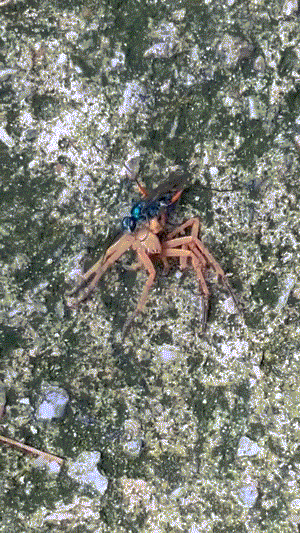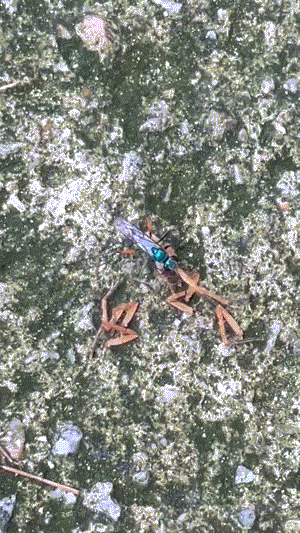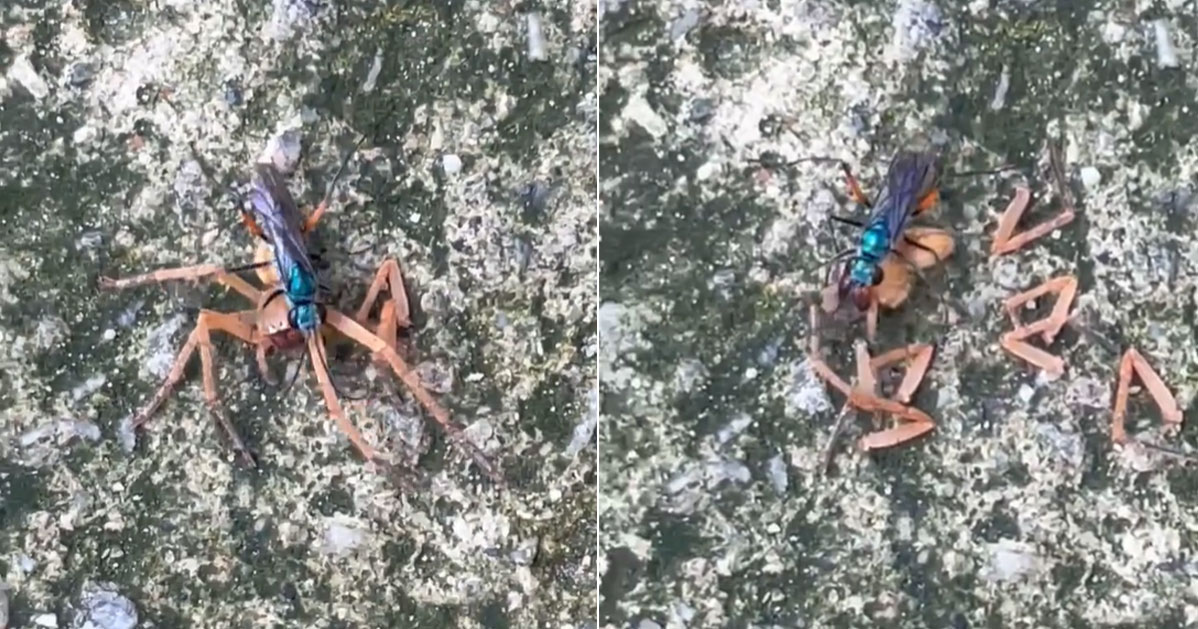A blue spider wasp (Auplopus comparatus) has been filmed amputating the legs of a spider in Singapore.
The fascinating 50-second footage, shot on Coney Island, was uploaded on April 9, 2021, on the Singapore Wildlife Sightings Facebook group.
What the video showed
The video showed the blue spider wasp crawling on top of an immobilised spider.
The wasp appeared smaller in size compared to the spider, but that did not pose any problems in overcoming the prey.
In less than 20 seconds, the wasp had already removed one leg.

When it was almost done removing all the spider's legs in 40 seconds, a voice from a person off-camera said: "Wah, it's like chicken wings."
By the end of the video, the wasp latched onto the spider's body, and appeared to fly away with it in a flash.
What was left behind were the legs of the spider.

Explanation
Spider wasps can be found almost everywhere in the world, except for Antarctica.
Such spider-hunting wasp have the habit of cutting off the legs of spiders before transporting the body back to the nest.
This was what the wasp did to the spider on Coney Island.
Use spider's body to lay eggs inside
According to the Museums Victoria, most members of this wasp family, the Pompilidae, leave the spider intact and paralysed temporarily after removing the legs of the prey.
The spider's body is carried back to the nest where the wasp lays eggs in it.
Sometimes, the venom from the wasp only immobilises the spider for a short while.
The spider would then wake up to find that it has become a host for wasp eggs, and the cell is sealed after the eggs are laid, but it does not have any limbs to get away.
Spider to provide nutrients for grub
The egg that hatches subsequently will reveal a fat wasp grub that will feed on the internal juices of the spider.
The spider will end up a shrivelled husk.
The grub then forms a pupa, and eventually, emerges from its cell as an adult wasp.
The cycle then continues.
Scientific names
Auplopus is a large genus of spider wasps belonging to the subfamily Pepsinae of the spider wasp family Pompilidae, distributed throughout the world except for Antarctica.
Auplopus wasps amputate the legs of their spider prey before transporting the body back to the nest.
Other incidents
A spider wasp was seen attacking and immobilising a tarantula in United States, Arizona.
Top photo via
If you like what you read, follow us on Facebook, Instagram, Twitter and Telegram to get the latest updates.
